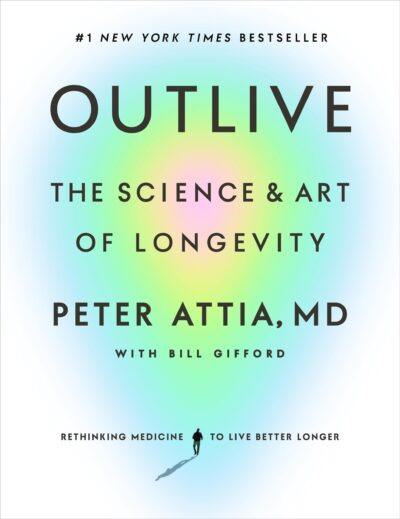68 Results with the "Self-help" genre
Adventure Fiction (1164)
Biography (435)
Business & Finance (1)
Children's Literature (124)
Comics (6)
Culture (51)
Drama (123)
Dystopian (29)
Fable (86)
Fantasy (1132)
Fantasy (203)
Fiction (1010)
Finance (1)
Gothic Fiction (12)
Historical Fiction (615)
History (122)
Horror (56)
Lifestyle (36)
Literary (404)
Literary Fiction (207)
Memoir (113)
Mystery (422)
Non-fiction (87)
Novel (549)
Paranormal Fiction (96)
Philosophical (182)
Philosophy (45)
Poetry (249)
Political Fiction (14)
Politics (42)
Practical (32)
Psychological (4)
Psychological Thriller (108)
Relationship (6)
Romance Novel (716)
Romantic Melodrama (14)
Satire (91)
Science (46)
Science Fiction (345)
Society (65)
Society (2)
Spiritual Growth (1)
story (2)
Thriller (704)
True Crime (56)
view (11)
Women's Fiction (2)
Young Adult (233)
-
 Chapter 16: Learning to Inhabit Your Body: Yoga. Yoga offers more than physical benefits—it facilitates a deeper connection with our bodies and emotions, fostering a sense of inner peace and self-acceptance. When we begin to focus on the body, we activate a natural inclination toward self-care that emerges from within. This shift in attention, away from societal pressures and external standards, allows us to experience a new level of authenticity in how we care for ourselves. By practicing mindfulness…
Chapter 16: Learning to Inhabit Your Body: Yoga. Yoga offers more than physical benefits—it facilitates a deeper connection with our bodies and emotions, fostering a sense of inner peace and self-acceptance. When we begin to focus on the body, we activate a natural inclination toward self-care that emerges from within. This shift in attention, away from societal pressures and external standards, allows us to experience a new level of authenticity in how we care for ourselves. By practicing mindfulness…-
360.1 K • Ongoing
-
-
Chapter
Acknowledgments
 Acknowledgments in Outlive provides readers with a heartfelt and behind-the-scenes look at the collaborative effort and personal resilience that helped bring the book to life. Originally placed on hold in early 2020 due to setbacks with the manuscript submission, the project faced considerable obstacles when the authors were let down by their book agent and publisher. However, Michael Ovitz’s timely intervention became a pivotal moment, helping revitalize the project and enabling it to move forward.…
Acknowledgments in Outlive provides readers with a heartfelt and behind-the-scenes look at the collaborative effort and personal resilience that helped bring the book to life. Originally placed on hold in early 2020 due to setbacks with the manuscript submission, the project faced considerable obstacles when the authors were let down by their book agent and publisher. However, Michael Ovitz’s timely intervention became a pivotal moment, helping revitalize the project and enabling it to move forward.…-
87.7 K • Ongoing
-
-
 The Four Agreements by Don Miguel Ruiz offers practical wisdom for personal freedom, teaching four simple principles to break free from limiting beliefs and find peace: Be impeccable with your word, Don’t take anything personally, Don’t make assumptions, and Always do your best. A powerful, transformative read for personal growth.
The Four Agreements by Don Miguel Ruiz offers practical wisdom for personal freedom, teaching four simple principles to break free from limiting beliefs and find peace: Be impeccable with your word, Don’t take anything personally, Don’t make assumptions, and Always do your best. A powerful, transformative read for personal growth.-
28.5 K • Jan 8, '25
-
4.2 K • Jan 8, '25
-
4.6 K • Jan 8, '25
-
-
 Chapter 6: Losing Your Body, Losing Your Self, the journey of healing often begins with learning to live with the questions themselves, as Rainer Maria Rilke beautifully expressed in his letters to a young poet. Just as with the challenges in our emotional and psychological states, the answers to our struggles may come slowly, without our direct awareness. Instead, we might find our way toward understanding through the simple act of living with the discomfort of the questions. Sherry walked into my…
Chapter 6: Losing Your Body, Losing Your Self, the journey of healing often begins with learning to live with the questions themselves, as Rainer Maria Rilke beautifully expressed in his letters to a young poet. Just as with the challenges in our emotional and psychological states, the answers to our struggles may come slowly, without our direct awareness. Instead, we might find our way toward understanding through the simple act of living with the discomfort of the questions. Sherry walked into my…-
360.1 K • Ongoing
-
-
 Chapter 1 introduces the central theme of longevity by exploring the deeply personal experiences of a physician who has witnessed death in its various forms, shaping his understanding of medicine and aging. The author recalls a pivotal moment during medical school when he encountered patient death for the first time, an experience that profoundly impacted his perspective on healthcare. This moment, followed by years of seeing both acute and chronic deaths during his residency at Johns Hopkins, led him to…
Chapter 1 introduces the central theme of longevity by exploring the deeply personal experiences of a physician who has witnessed death in its various forms, shaping his understanding of medicine and aging. The author recalls a pivotal moment during medical school when he encountered patient death for the first time, an experience that profoundly impacted his perspective on healthcare. This moment, followed by years of seeing both acute and chronic deaths during his residency at Johns Hopkins, led him to…-
87.7 K • Ongoing
-
-
 Chapter 17: Putting the Pieces Together: Self-Leadership. In life, we all experience moments where parts of ourselves seem to take over. For example, when confronted with trauma, we develop coping mechanisms that help us survive but may also fragment our sense of self. One of the key aspects of self-leadership is understanding and managing these internal parts, each with its own needs and responses. This process of integration is central to healing, especially for those who have faced significant trauma or…
Chapter 17: Putting the Pieces Together: Self-Leadership. In life, we all experience moments where parts of ourselves seem to take over. For example, when confronted with trauma, we develop coping mechanisms that help us survive but may also fragment our sense of self. One of the key aspects of self-leadership is understanding and managing these internal parts, each with its own needs and responses. This process of integration is central to healing, especially for those who have faced significant trauma or…-
360.1 K • Ongoing
-
-
Chapter
INTRODUCTION
 INTRODUCTION The Smokey Mirror THREE THOUSAND YEARS AGO, THERE WAS A HUMAN just like you and me who lived near a city surrounded by mountains. The human was studying to become a medicine man, to learn the knowledge of his ancestors, but he didn’t completely agree with everything he was learning. In his heart, he felt there must be something more. One day, as he slept in a cave, he dreamed that he saw his own body sleeping. He came out of the cave on the night of a new moon. The sky was clear, and he…
INTRODUCTION The Smokey Mirror THREE THOUSAND YEARS AGO, THERE WAS A HUMAN just like you and me who lived near a city surrounded by mountains. The human was studying to become a medicine man, to learn the knowledge of his ancestors, but he didn’t completely agree with everything he was learning. In his heart, he felt there must be something more. One day, as he slept in a cave, he dreamed that he saw his own body sleeping. He came out of the cave on the night of a new moon. The sky was clear, and he…-
90.9 K • Ongoing
-
-
 Chapter 7 explores the critical role of attachment in shaping a child's emotional and psychological development. The research conducted at the Massachusetts Mental Health Center focused on children who had experienced severe neglect and abuse. These children, although exhibiting various disruptive behaviors, such as aggression, emotional numbness, and withdrawal, were also deeply in need of affection. The behavioral patterns observed in the clinic revealed how trauma had altered their ability to form…
Chapter 7 explores the critical role of attachment in shaping a child's emotional and psychological development. The research conducted at the Massachusetts Mental Health Center focused on children who had experienced severe neglect and abuse. These children, although exhibiting various disruptive behaviors, such as aggression, emotional numbness, and withdrawal, were also deeply in need of affection. The behavioral patterns observed in the clinic revealed how trauma had altered their ability to form…-
360.1 K • Ongoing
-
-
 Chapter 3 of Objective, Strategy, Tactics – A Road Map for Reading This Book explores the importance of taking a structured, strategic approach to health and longevity. The chapter begins with the author reflecting on a funeral he attended, where he observed the significant physical and cognitive decline that often accompanies aging. This experience highlights a common trajectory in later life—one where individuals, despite their earlier years of independence, gradually lose their ability to function…
Chapter 3 of Objective, Strategy, Tactics – A Road Map for Reading This Book explores the importance of taking a structured, strategic approach to health and longevity. The chapter begins with the author reflecting on a funeral he attended, where he observed the significant physical and cognitive decline that often accompanies aging. This experience highlights a common trajectory in later life—one where individuals, despite their earlier years of independence, gradually lose their ability to function…-
87.7 K • Ongoing
-
- 1 2 … 6 Next

